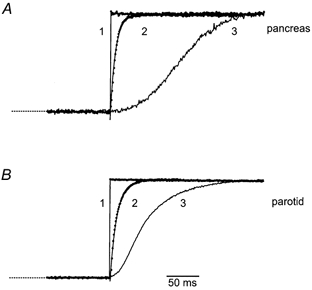Figure 6. Kinetics of Ca2+-activated Cl- current activation evoked by flash photolytic release of saturating levels of Ca2+ or by the flash photolysis of 10 μm caged-InsP3.

For comparison, the representative currents from patch-clamped PAC (A) or PAR (B) were normalized and aligned. Trace 1 shows that there was no substantial current evoked by the flash photolysis of caged-Ca2+ when cells were held at 0 mV (the reversal potential for Cl−), but current was nearly instantaneously and maximally activated when Vm was stepped to −30 mV. Trace 2 shows examples of IClCa activation (symbols) evoked by flash photolysis of caged-Ca2+ in cells held at −30 mV. The continuous lines represent single exponential fits to the data. Time constants determined from the fits were 15.3 ms for PAC and 10.5 ms for PAR. Currents produced by the flash photolysis of 3 μm caged-InsP3 in PAC (trace 3 in A) and PAR (trace 3 in B) activated following a delay and rose with complex kinetics. InsP3-induced currents were offset −100 ms and −25 ms for PAC and PAR, respectively, to align the rises in current with those evoked by the photolytic release of caged-Ca2+.
